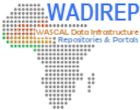Disasters, particularly recurring small-scale natural disasters of floods and droughts have been affecting West African (WA) communities, impacting particularly weak households. These losses have been significantly high over the last decade due to increasing climate variability and inherently depressed socio-economic systems. However, to date, few studies have attempted to understand the vulnerability profiles in WA to these multiple hazards across several scales. A considerable number of studies predict the impacts of droughts and floods hazards, but many do so at a very coarse scale and without any participatory process, as a result, they are unable to predict localized impacts. Despite many efforts put in vulnerability assessments, there has been limited success in simultaneously traversing scale and hierarchy and the need for upscaling risk indices is important to understand the effects of cross scale interactions. To address these gaps, this thesis (i) explored methods to involve at-risk populations in local communities in a bottom-up participatory process as opposed to the classical top-down, single scale approaches and (ii) assessed the risks from multi-hazard perspectives in a coupled Socio-Ecological System (SES). The thesis also (iii) explored appropriate methodologies that can reflect the spatial variability of flood hazard intensity at community level. Building on these investigations, the thesis finally (iv) introduced a novel risk index upscaling procedure to upscale risk and vulnerability indices across multiple scales.
The thesis used several methods ranging from rural participatory methods, statistical, Geographic Information System (GIS), remote sensing and introduced the innovative concept of Community Impact Score (CIS). The results show that more than half of the designated local level indicators and over two thirds of the macro scale indicators are rarely used in present risk assessments in the region. Additionally, although an indicator may be common to three countries, their differential rankings will result in differences in explaining the risks faced by people in different societies.
Empirical validation of a flood hazard map using the statistical confusion matrix and the principles of participatory GIS show that flood hazard areas could be mapped at an accuracy ranging from 77% to 81%. These high mapping accuracies notwithstanding, the flood index categories may change under conditions of very high rainfall intensities beyond the anomalies used to construct the model. To this end, studies that aim at understanding projected flood intensities under varying rainfall conditions beyond the anomalies used in this study are recommended. This is important to determine the trajectory of flood safe havens or hotspots across an entire study area. The study also develops two important indices, The West Sudanian Community Vulnerability Index (WESCVI) and The West Sudanian Community Risk Index (WESCRI). The underlying factors constituting the two indices are the elements of risk and vulnerability profiles of communities in West Africa. The WESCVI and WESCRI should help planners and policy makers to analyse and finally reduce vulnerability and risk. To evaluate the results of the risk indices, this thesis introduces a novel technique to validate the results of complex aggregation methods. Based on up to date knowledge, the CIS concept is the first in the available literature of risk assessment. The thesis also provides a theoretical concept to upscale risk and vulnerability indicators from watershed to higher spatial scales. Further studies are however recommended to apply these theoretical concepts. A conclusion of the thesis is that while it has neither been optimal to completely neglect classical approaches nor to take as an absolute fact opinion from local experts, more emphasis should be paid to the later in risk assessment that is supposed to serve the very people on whose behalf the assessment is done. Attempts should therefore be made in finding mechanisms where the two approaches could interact fruitfully and complement each other.
Data and Resources
| Field | Value |
|---|---|
| Modified | 2024-03-05 |
| Release Date | 2019-09-06 |
| Identifier | 1134e454-f00e-4dc1-90eb-e120a23e707c |
| Covered Regions/Countries | |
| Temporal Coverage | Thursday, April 27, 2017 (All day) |
| Language | English |
| Contact Name | Daniel Asare-Kyei |
| Contact Email |

![[Open Data]](https://assets.okfn.org/images/ok_buttons/od_80x15_blue.png)